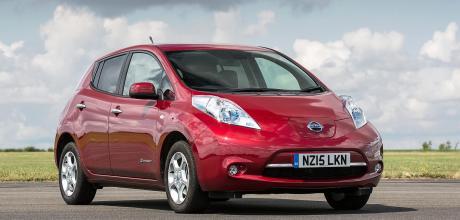Should I buy a ten-year old electric car?

The Mk1 Nissan Leaf was the first mass-market electric vehicle to be sold in the UK, designed to bring zero emissions motoring to a wider audience. Today, the first examples are more than a decade old, and often appear as the most affordable electric models in used car searches. So should you rush out and buy one, or would that be as sensible as throwing money onto a bonfire?
Is buying a 2010 Nissan Leaf a good idea?
Buying a first-generation EV like the Leaf can certainly be a good idea, but only if you are aware of its limitations, and these fit with your plans for the car. Older Leafs will have a limited driving range and fairly slow charging, but this won’t be a problem if you want a car for driving around town and plan to charge the car at home overnight.
For this reason, ageing EVs like the Leaf can be a great option for city dwellers who don’t mind using alternative transport to go further afield, or suburban buyers who have a second car to fall back on for motorway trips.
Will it already be at the end of its working life?
When mainstream electric cars first arrived, there was lots of concern that the batteries would fail and need replacing after just a few years. In reality, the cells fitted in models like the Mk1 Leaf have proved to be very reliable, and most examples are still going strong with their original battery pack. There are even some Leafs with more than 200,000 miles on the clock.
This is despite the fact that the first Leaf lacks any active thermal management, with its battery instead being passively air cooled. This has led to some longevity issues in very hot countries, but Britain’s generally mild climate means this has been far less of an issue. We would avoid Leafs imported from hotter countries, though. Of course, a ten-year old Leaf won’t have the same driving range as when it was new, which was quoted at 109 miles from its 24kWh battery pack. Nissan has predicted the battery should be at 70 to 80 per cent capacity after 100,000 miles. Owners tend to report a real-world range of around 70 miles in early Leaf models.
What problems should I watch out for?
When planning a test drive, it’s important to ask the owner or dealership to fully charge the car before your arrival. The Leaf features a charge indicator with 12 bars when full, so in an older car you may want to avoid examples with 10 bars or less showing after a full top-up. At the very least, the capacity of the battery pack should be reflected in the asking price. Take a look at the predicted range figure after a full charge too, and ensure it decreases steadily as you drive, roughly in line with the distance the car covers.
Cars came with 3.3kW charging as standard, with a Type 1 port and a cable that plugs into wallboxes and public chargers. This is quite a bit slower than the latest electric vehicles, and a full charge takes around eight hours. A 6.6kW charger was a later option, so if you plan on charging while out and about, this can be worth seeking out, halving the charging time.
It may seem slightly odd, but the Leaf (like most EVs) also has a traditional 12-volt car battery that’s used to run the electrical systems, radio, remote central locking and so on. In fact, this is one of the few parts of the Leaf that needs replacing to ensure it remains working correctly, and they typically last around three years. Of course, the Leaf also has other components that can wear out, just like any car. Make sure you check the brakes, tyres and suspension are in good order; the motor is so quiet, it should be easy to hear any squeaks and clunks from worn out components.
Leaf servicing intervals are 18,000 miles apart, and some owners have refrained from servicing the Leaf because there’s so little to go wrong. While a patchy service history can be less of an issue here than for a petrol or diesel model, it’s still important that items like the brake fluid have been changed correctly, so it may be best to walk away if there’s no documented evidence for this.
What are the benefits?
While diesel and petrol engine technology has been transformed in the past decade, put your foot down in a Mk1 Leaf and its electric motor should feel just as smooth, punchy and quiet as the day it left the factory. With 107bhp and 207lb ft of torque on tap, it makes the Leaf a relaxing and nippy runabout. For less than the cost of a brand new city car, you could be driving a quiet, zero-emissions family hatchback that costs pennies to run. If you are concerned about the environment, buying an older car also avoids the significant emissions that are generated when building a new car.

